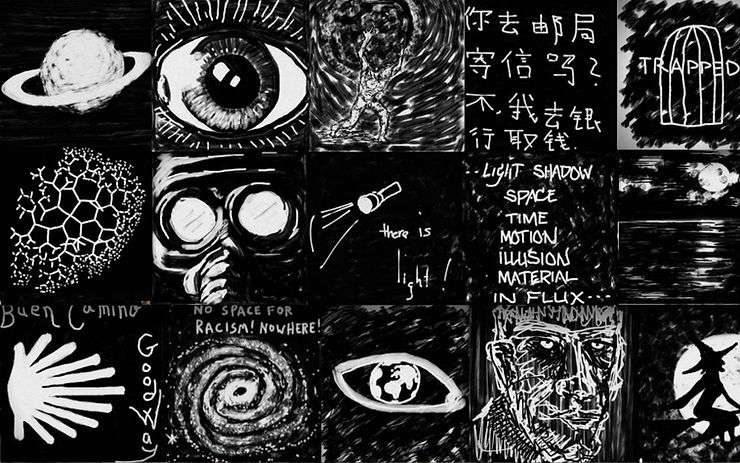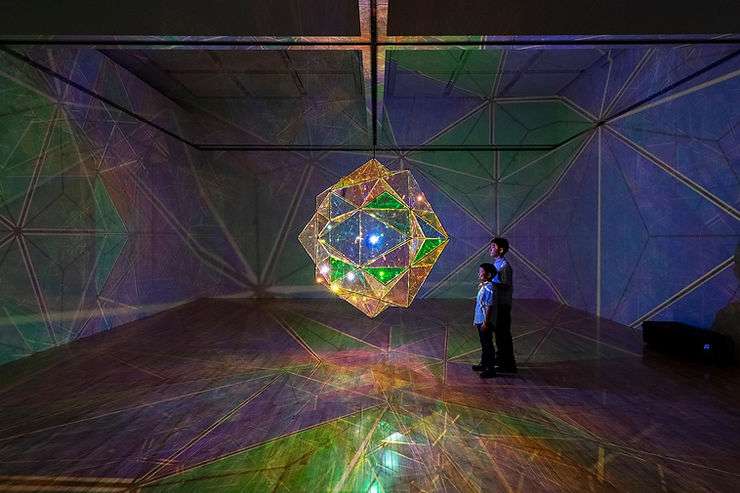From the indivisible unit of a stroke of colour to the illumination of a room with emotional connection, art and science have always existed in a common space. Their relationship is marked by new materials and techniques in exchange of inspiration, which have moved to different lengths with the spectator over time. Beyond technology, science has also changed how sensory memory is formed through art.
Take Me As I Am

David Deweerdt’s work begins with enveloping the human body and sensation into an internal affair. It continues to explore it with a perception of deformities or physical differences. The powerful colours used in his visuals stir the spirit of beauty, violence and heartbreak over visual pleasure. He brings a different approach towards the human body on the table by challenging the visual comfort of his audience.
Deweerdt combines the idea of ever-long journeys in the human body with the paradoxes of human nature. Not only does his work on a woman and man play with minute details such as veins and bones, but it also merges into the depths of conflicts, fears and fantasies in their conscience.

His inconsistent images find their ground by using humans as a medium to portray their movements – naked and torn apart to awaken his audience. He brings the biological structure of the human body to his canvas and fills it with hidden quests for psychological experiences. The deconstruction of body systems varies from flesh to darkness and bones to mindful wonder.
A Living Calculation
The unlikely pairing of Biology and Mathematics finds shelter in the structures of American artist and architect Jenny Sabin. She pays attention to design through computation and plays with the existence of data. Her project Luster (2018) brings radiant woven light to the roof of human existence, with a combination of textiles and solar active fibres that process light in a responsive setting. The interplay of light and shadows changes throughout the day and night.

In another one of her projects, Polymorph (2013), hanging structures hold the integration of complex phenomena in geometry through art and architecture. The Beacon (2016) is an intersection of mathematical application, architecture, medicine and textile that involves responsive materials such as solar active and photoluminescent yarns. It represents the collective spirit of spaces as well as longevity and engagement.
The immediate environment surrounding her work is informed by measurement and inspired by primary, yet colourful units. Her studio is a residence to molecular webs and calculated balances.
The Artist with a Laboratory
A devotion to the idea of self and perceptions of art and the greater world through creative materials is seen in the works of Olafur Eliasson. His expanse of public spaces driven by scientific application with a diversity of installation, sculpture, painting, photography and film. An advocate for environmental concerns, Eliasson also questions aspects of Physics through light, shadow, colour, landscape, space and sound.

In his work Rendezvous with a flare (2019), he assigns planetary positions to colours. His engagement with the sun and moon is seen in several instances, including Drawings from Moon (2013) and The exploration of the centre of the sun (2017), as they interact with human tendencies. The direction of his work is driven by visuals that cannot escape the vision of the audience, and bring out a feeling of wonder lost in museums.

The descriptions of his work combine science with individual and societal experiences. His laboratory, in place of a studio, positions him as a scientist in the arts.

It is a fusion of thought and activity applied in textbook concepts that contain his urge to explore. The volume of his work, spread across three decades, discovers the conflict of feelings under a magnifying glass.
The Case for Viruses
David Goodsell’s hauntingly beautiful representations of deadly viruses are a mirror to his studies of molecules that cause cells and pathogens to exist. The subject matter in his work comes from electron microscopy, x-ray crystallography, and nuclear magnetic resonance spectroscopy to clarify the appearance of molecular structures and the infection of microbes.

His publication, Cellular Landscapes in Watercolour (2016) breaks down the process of his work from research and initial sketching to watercolour rendering. Another publication, From Atoms to Cells: Using Mesoscale Landscapes to Construct Visual Narratives (2018) describes the ideation and structure that goes behind scientific illustration. His image of HIV was the logo for the Conference of Retroviruses and Opportunistic Infections in 2019. He also constructed CellPAINT, a digital program that allows users to illustrate their own versions of viruses and cells.

Often described as a toyshop, Goodsell’s space is filled with three-dimensional structures of molecules as well as representations of cells and pathogens without a limit of shades. He uses a variety of illustration tricks in order to convert the images of deadly biological units into accurate information of colours and details.
A Hidden Telescope
A search for childlike marvel is completed in Lia Halloran’s unrealistic portrayal of space and time. She interacts with a range of scientific aspects, including the natural world, astronomy, chemistry in elements and minerals as well fictional possibilities.

Her most compelling projects include Solar (2019), which derives connections between independent entities of space. Ink arranges faces in a periodic table in Elements as well as human bodies in Sublimation/Transmutation. Her work traces the physics of motion and intimacy.

Your Body Is A Space That Sees (2016) is an enchanting tale of space in movement and emotion. Dark Skate is a continuous effort since 2008 that conveys the significance of light travelling in ordinary spaces.
A subtle personality is always hidden behind the foundation of her work, even in case of something as simple as the passage of light. Her fascination with outer space and solar energy is enhanced by fantastical elements on a ground of conscious reality. She composes her thoughts into structures that investigate the extent to which science interacts with imagination.

Processes as elementary as sublimation, transmutation and metamorphosis are personified to depict humans as finite elements in an infinite universe.
From Leonardo Da Vinci’s scientific philosophy to a treasure of trial and errors, different roads between art and science have led to a balance between the two destinations. Contemporary artists have woven their interest in science into mediums that not only inform but also begin a curiosity that was thought to have been lost in pages and binaries of the discipline’s regulation.
While you’re at it, here is an artist who turns signs from science into wonders of art!




